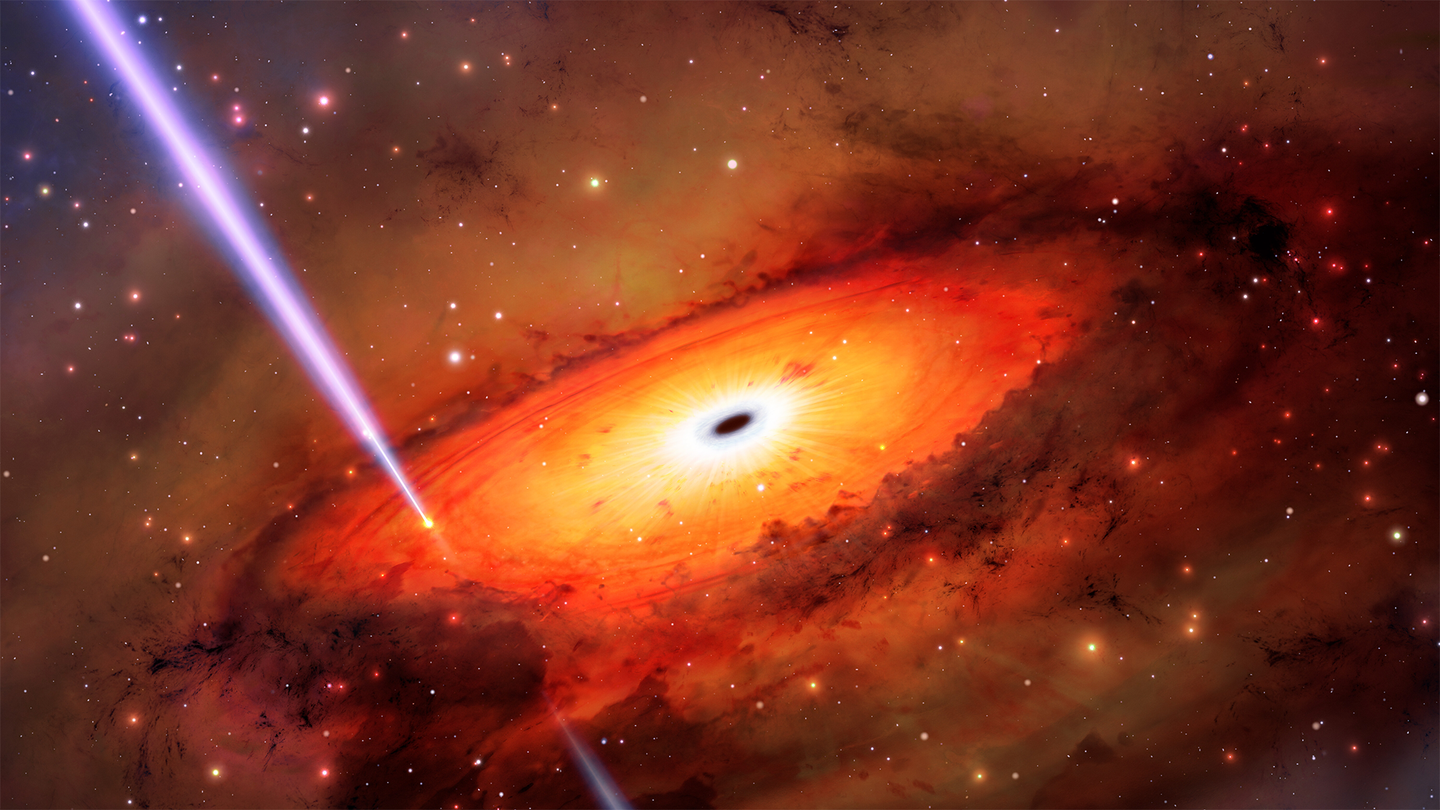
Astronomers using the Gemini South telescope in Chile spotted an enormous energetic explosion coming from an ancient galaxy. This blow-up was likely triggered by a “demolition derby” type of star death that scientists have long hypothesized, but never observed. This smashing star annihilation is described in a study published June 22 in the journal Nature Astronomy.
[Related: What would happen if the Milky Way died?]
Most star deaths occur in pretty predictable ways, depending on their mass. Our sun and other relatively low-mass stars slough off their outer layers as they get older, and they eventually fade to become white dwarf stars. The bigger stars burn brighter and die out sooner in supernova explosions that create ultra dense objects like black holes and neutron stars. If two of these kinds of stellar remnants form a binary system, they can collide.
This new study points to an option that has been hypothesized for at least 49 years, but hasn’t been observed. The gamma-ray burst (GRB) that they observed was about 3 billion light-years away from Earth in the rough proximity of the constellation Aquarius. It may have been caused by two compact stars—possibly neutron stars—colliding within a chaotic and densely packed environment near a giant black hole located at the center of an elliptically shaped galaxy.
The team believes that these two ill fated stars were packing roughly the mass of our sun into a sphere that is only the size of a city.
“These new results show that stars can meet their demise in some of the densest regions of the Universe where they can be driven to collide,” Andrew Levan, study co-author and astronomer at Radboud University in The Netherlands, said in a statement. “This is exciting for understanding how stars die and for answering other questions, such as what unexpected sources might create gravitational waves that we could detect on Earth.”
Ancient galaxies hosting this star demolition derby event are typically long past their star-forming prime. They would have few, if any, giant stars which are the principal source material of long GRBs. However, the cores of these galaxies are full of stars and ultra-dense stellar remnants, including black holes, white dwarfs, and neutron stars.
On October 19, 2019, scientists got the first hints that collisions like the one observed by the team could occur when NASA’s Neil Gehrels Swift Observatory detected the presence of a bright flash of gamma rays that lasted for just over 60 seconds. If a GRB lasts more than two seconds, it is considered long. These bursts are typically seen in the supernova death of stars that are at least 10 times the mass of our sun, but not always.
[Related: An amateur astronomer spotted a new supernova remarkably close to Earth.]
To make long-term observations of the GRB’s fading afterglow and learn more about where it came from, the team used the Gemini South telescope. Their observations allowed the astronomers to find the exact location of the GRB to a region that is less than 100 light-years away from an ancient galaxy’s nucleus and also very near the galaxy’s enormous black hole.
The team also didn’t find any evidence of a corresponding supernova which would leave its imprint on the light studied by the telescope.
“Our follow-up observation told us that rather than being a massive star collapsing, the burst was most likely caused by the merger of two compact objects,” said Levan. “By pinpointing its location to the center of a previously identified ancient galaxy, we had the first tantalizing evidence of a new pathway for stars to meet their demise.”
The team hopes to discover more of these stellar events and also to match a GRB detection with a corresponding gravitational-wave detection. Matching these two events would reveal more about their true nature and even confirm their origins.
“Studying gamma-ray bursts like these is a great example of how the field is really advanced by many facilities working together, from the detection of the GRB, to the discoveries of afterglows and distances with telescopes like Gemini, through to detailed dissection of events with observations across the electromagnetic spectrum,” said Levan.
The post Explosive star ‘demolition derby’ observed for the very first time appeared first on Popular Science.
Articles may contain affiliate links which enable us to share in the revenue of any purchases made.
from | Popular Science https://ift.tt/UTLhtrK



0 Comments